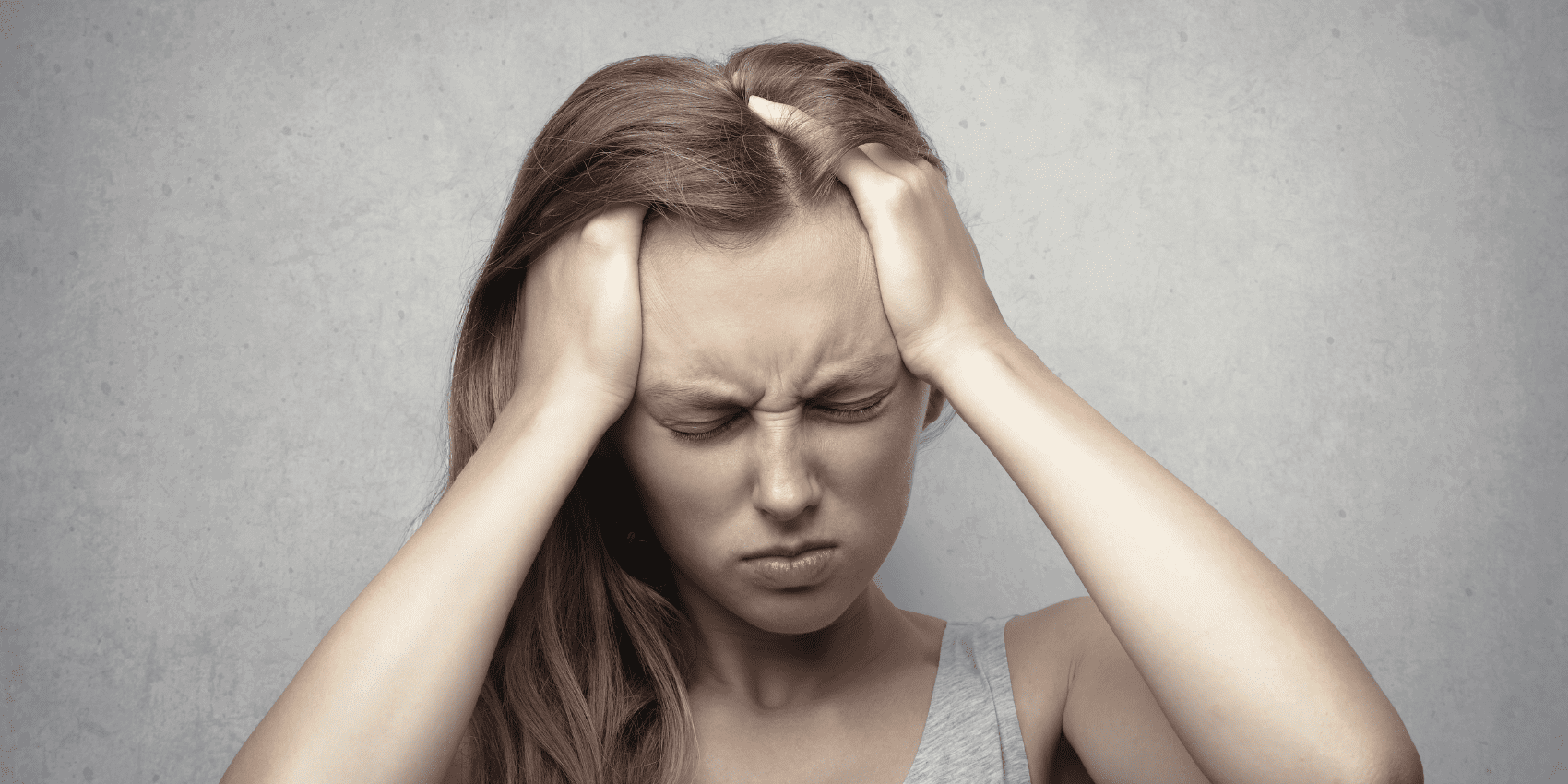How to relieve headaches with Chinese massage?
Headaches (headaches, migraines) are relatively common. In traditional Chinese medicine, there can be several syndromes with many different causes. And often, syndromes intertwine. A particular case of headaches is when they are due to a problem in the cervical region.
Summary
There are 2 types of syndromes, attacks external with fullness only and the attacks internal with cases of deficiency and cases of fullness.
External headaches
In headaches by external attack, we have either thecold wind attack either theheat wind attack. The wind always attacks the body from above. It is not the wind that creates pain but other pathogens that do, mainly the cold.
Clinical signs
THE taiyang headaches which are more localized at the back of the skull. We will have the symptoms for surface damage.
If we have a case of cold wind
Fear of cold and wind, body aches, low-grade fever without sweating, pale complexion, cough, runny nose, patient relieved by heat. His face hurts, it hurts in his forehead, in his temples. Cold therefore it serves at the level of the head, if in addition humidity it envelops.
Headaches that accept well massage despite the fullness. The person seeks to cover themselves, to warm themselves.
The tongue is lightly loaded with a thin white coating.
The pulse is shallow and tight or shallow and tense due to pain.
If we have a case of heat wind
Higher fever, sweating, thirst, red complexion and head, headaches which will be different. Feeling like the head is going to explode, internal pressure pushing outwards.
Constipation, yellow urine, sore throat, cough, phlegm, runny nose, yellow and thicker discharge, possible conjunctivitis, headache.
Red tongue or tip of red tongue (Upper Hearth), rather thin and yellow coating, the longer it lasts the thicker it becomes.
Pulse superficial, rapid and tense.
If there is humidity, the head feels completely enveloped, the coating will be more humid, greasy and slippery, the pulse will also be slippery and the secretions will be greater.
Internal headaches
In internal medicine, we can have fullness type headaches
Clinical signs
– Liver-related pathologies
Stagnation of Qi of the liver, heat production in the liver, rise of liver yang, heat humidity in the liver.
Liver signs, Shaoyang headache lateral part of the skull (often one side or the other) encompasses migraine or jueyin vertex headache (top or middle): emotional disturbances, stress, anger, pressure cooker, tense, tense, clenched jaw, contracted facial expression, tightness in the stomach, nervousness, sighing, insomnia, bitter mouth, chest tightness, menstrual irregularity, dysmenorrhea , tinnitus, dizziness, pain in the eyes, dazzling, always muscular tension, tense shoulders, neck arch on both sides, tense trapezius (contraction qi mechanism), inappetence, tension is visible on the face, flow fast speech, red complexion, red eyes, people who get angry very quickly.
If it is chronic, it can cause stabbing pain in the skull (chronic stagnation of qi which leads to blood stagnation), shooting pains which turn into needles.
It does not modify the tongue unless there is stagnation of qi which gives stagnation of blood tongue with bluish points of stagnation, if it gives production of the heat of fire, red tongue with red dots on the sides. Blood stagnation, we look at the sublingual veins which are clearly visible.
Tense pulse, the more heat there is, the faster it is, blood stagnation therefore rough.
– Disharmony of the stomach
Rising heat often leads to food stagnation in the stomach.
When I have a chronic stomach with stomach qi stagnation, heat production or even stomach fire.
The heat rises and causes yangming headache on the forehead.
Rising heat is often due to poor diet.
Stomach fire, especially in chronically stressed people, production of gastric juices which heat up, headaches in the forehead.
As stomach signs, there will be epigastric fullness, bloating, nausea, vomiting, belching, heartburn, sternal pain (gastroesophageal reflux GERD), chest pain, reflex cough especially at night. Gingivitis, bruxism at night (found in stomach fire),
if heat and humidity, we will have sticky, foul-smelling stools, greasy and acidic sweating with an odor that changes for the patient, bad breath,
if stomach fire, we will have constipation, dry stools, irritation in the anus, hemorrhoids, yellow urine, red complexion, bad breath.
Red tongue, yellow coating more or less greasy if there is heat and humidity.
If the fire persists, chronic, deficiency of yin in the stomach, peeling of the middle part of the tongue and possibly a cracked tongue.
Pulse fast and tense or fast and slippery because of humidity.
Deficiency syndromes, easier to treat with the stomach.
– Qi and blood deficiency (spleen and stomach deficiency)
We end up with patients with a weak constitution (Middle Household not productive enough), psychological fatigue, physical fatigue, patient who does not have much appetite, who digests poorly, easy diarrhea, pale complexion, weak voice, easy dizziness, easy hypotension, headaches of low intensity, diffuse, poorly defined, rather continuous. The more fatigue there is, the more headaches will be present. The hungrier the person, the more likely the headaches will be. These people are looking for the massage that relieves them, they like to massage themselves, they like to come and get a massage. It can happen that it hurts in the morning and that it goes away just after breakfast.
In people who use a lot of screen time or who read a lot (mental and visual activity), the longer they spend during the day, the more tired they will be, it exhausts the blood and can lead to problems with concentration and memory.
Signs of qi deficiency: spontaneous sweating, lack of strength in the voice, lack of physical strength.
Signs of blood deficiency: pallor and dryness of the skin, nails, hair, eyes. Light periods, dysmenorrhea, contractions and cramps.
Pale and indented tongue if spleen (yang) deficiency with moisture production or pale and thin if blood and qi deficiency.
Thin, white coating.
Pulse thin and weak, can be deep (increasingly with deficiency).
– Kidney deficiency, also causes headaches
Headache with empty-headed feeling (the head is poorly nourished, hollow). Diffuse, general, internal headaches, as if it were being emptied from the inside, internal depression in the head. It's more of a diffuse discomfort than a pain.
Cloudy, empty, tired, ill-defined head with dizziness, dazzling, tinnitus, confusion problems (we can go as far as neurodegeneration of the brain, the brain is the sea of marrow, if poorly nourished, hollow head) which can go as far as 'to dementia, apathy, extinct, withdrawn with memory problems, drowsiness, poor kidney function, weakness of the knees, lower back, Dumai collapse, spermatorrhea, impotence, sphincter problems (the 2 yin). Patient who feels cold throughout the body, pale, spontaneous sweating, edema in the legs, deafness.
Long or short urine with heat.
If in addition yang deficiency of the spleen, morning diarrhea.
If in addition yin deficiency, general yin deficiency related to the heart, liver, dryness, empty heat, excitability, insomnia, nervousness, slight night sweats, hot flashes, heat in the 5 hearts (palms of the hands, soles of the feet and center of the chest), small yellow urination.
Pale tongue if yang deficiency, possibly large. White coating if yang deficiency.
Tongue thin if yin deficient and rather red. No coating if yin deficiency.
Weak and deep pulse (mainly at the kidneys).
If yang deficiency slow, soft pulse without strength.
If yin deficiency, pulse thin and rapid.

Neck pain headaches
There are also headaches (cases that cannot be classified) due to neck pain and cervicarthrosis. They are often accompanied by headaches. We have a lot of them, often in people over 60. We also find them in people with a history of neck pain, pinching, compression, parrot beaks, cracking necks.
Most of the time the origin is vascular. There is disruption of the posterior vertebral arteries, which penetrate the skull and supply the posterior part of the skull. Dizziness, tinnitus and headaches. As soon as the patient moves his head, positional vertigo. Dull and diffuse pain, never at the vertex level on the other hand.
When the patient turns their head quickly and feels dizzy, this is likely an inner ear problem, we call this positional vertigo. If he holds his head in one direction and feels dizzy, this is neck pain.
3 specific cases:
- It can come from the vegetative nervous system, we have the cervical ganglia, one at the bottom called lower cervical or stellate, a middle and a higher. These ganglia are stimulated and disrupt the irrigation and neurovascularization of the arteries of the skull;
- Another case is venous insufficiency in the skull. Part of the venous system of the skull will pass back through the torn posterior hole, the drained blood passes through there, the blood does not come out enough, it stagnates.
The patient will have headaches when lying on their back because it stagnates in the skull; - Arnold's neuralgia which gives pain, burning, helmet headaches. Branch of a nerve which passes at the level of the cervical root C2, the Arnold nerve exits the cervical, sensory branch of the 2th cervical root.
Protocol for a headache with internal liver attack
In order to treat a headache due to internal attack of the liver, we will follow the principles of the following treatment:
- Drain the liver;
- Regulate the Qi mechanism.
To do this, we will massage the points Ganshu (Liver shu point) and Danshu (shu point of the Gallbladder) at the level of the back. We may possibly add Geshu (shu point of the diaphragm).
At shoulder level we will work on the points Fengchi (located at the base of the skull) and Jianjing (which is at the top of the upper trapezius).
We will then move on to skull techniques, focusing the massage on the points Baihui, Si Shen Cong, Jiaosun And Shuaigu.
We can also work on Naokong (point on the Gallbladder meridian located 1.5 cun above Fengchi) if it is sensitive. It can be painful but is extremely calming.
Then come the techniques on the face in order to calm the shen. We will emphasize the points Yintang, Shenting, Taiyang And Yangbai will be my essential points.
Once all of these techniques are done, we will focus on the liver. To do this, we will separate the yin and yang of the chest. We will massage the point Qimen, we will slide over the points of the thorax and under the diaphragmatic domes.
Then we will perform a liver pump before proceeding with a diaphragm stretch.
I finish with peripheral points on the meridians by massaging Hegu, Neiguan And Taichong.
This entire protocol will help relax the liver and thus reduce the intensity and frequency of headaches.
The approach will be similar for treatment by acupuncture.
Take care of yourself 🙏🏼
Share this article with your loved ones and friends 🙂

